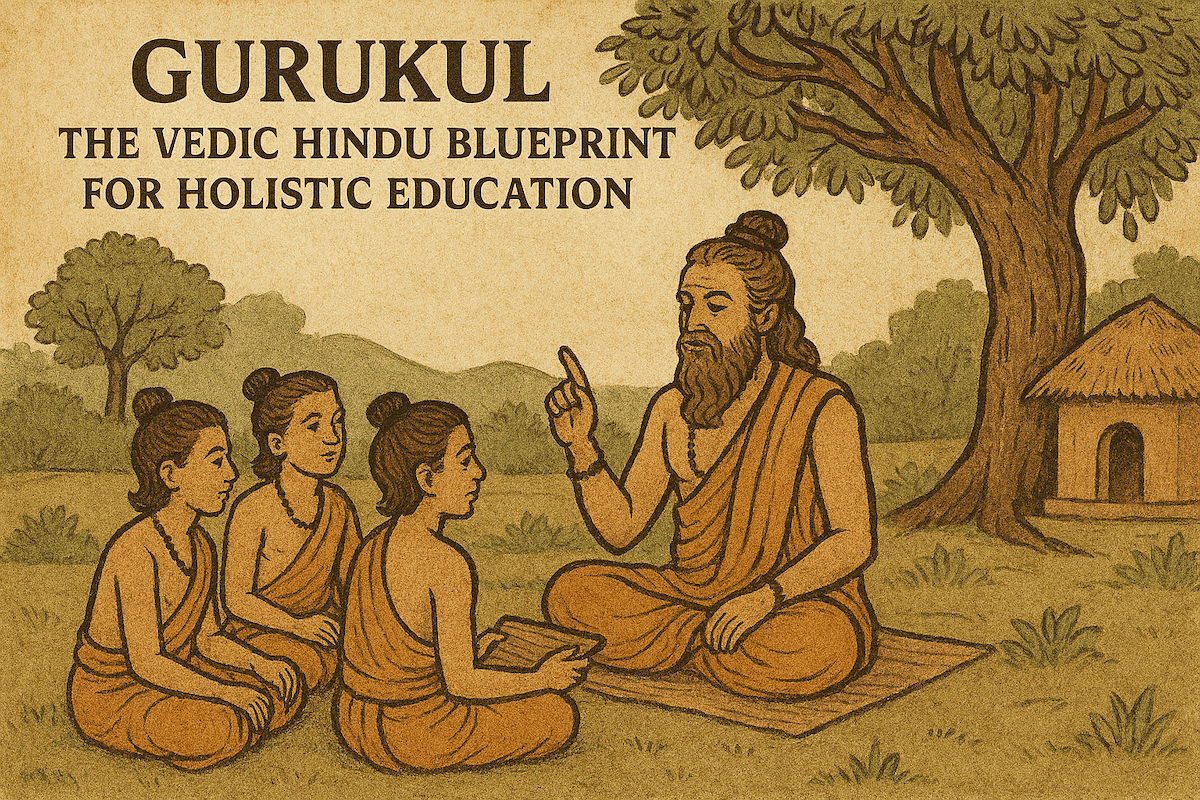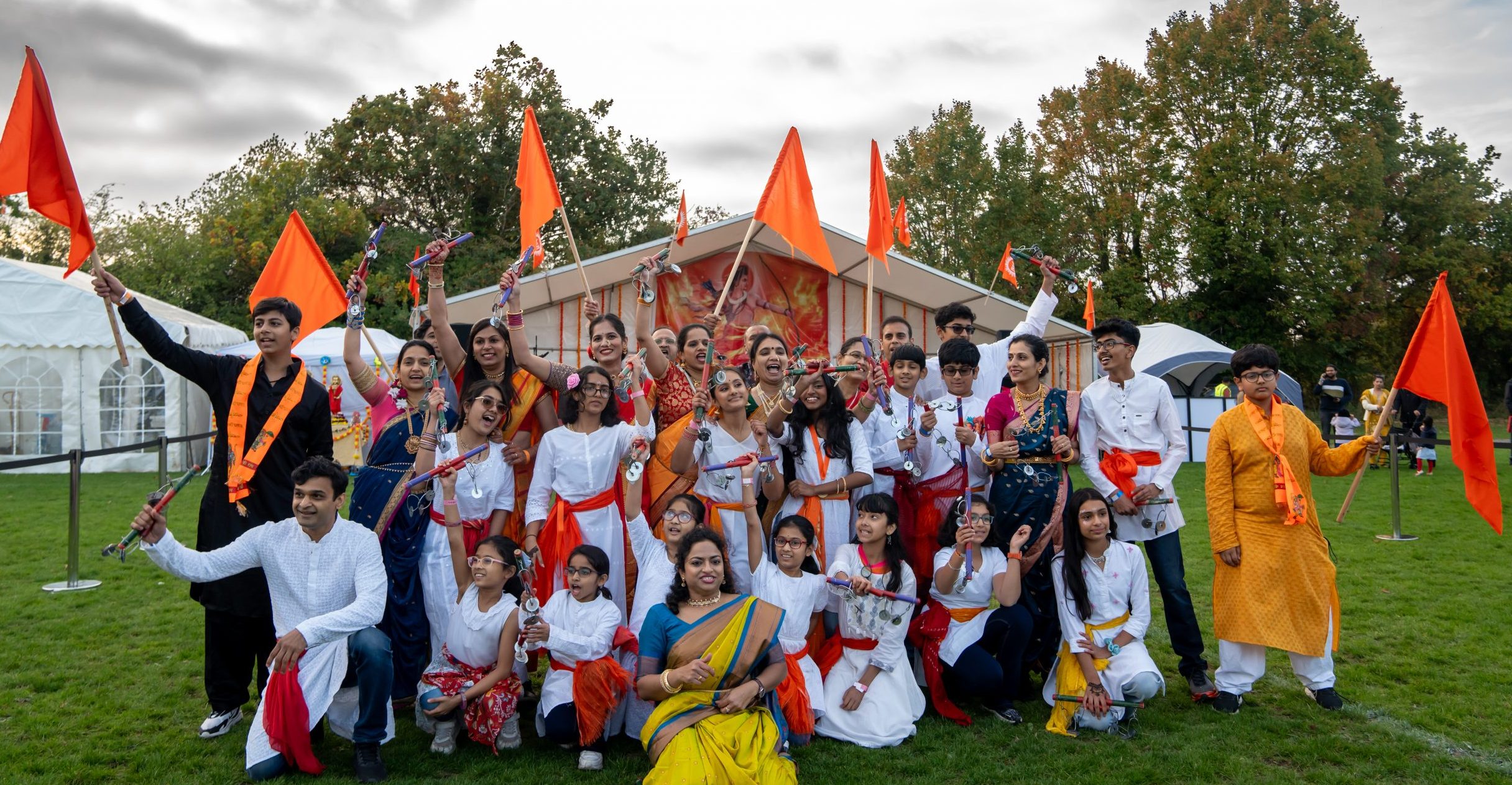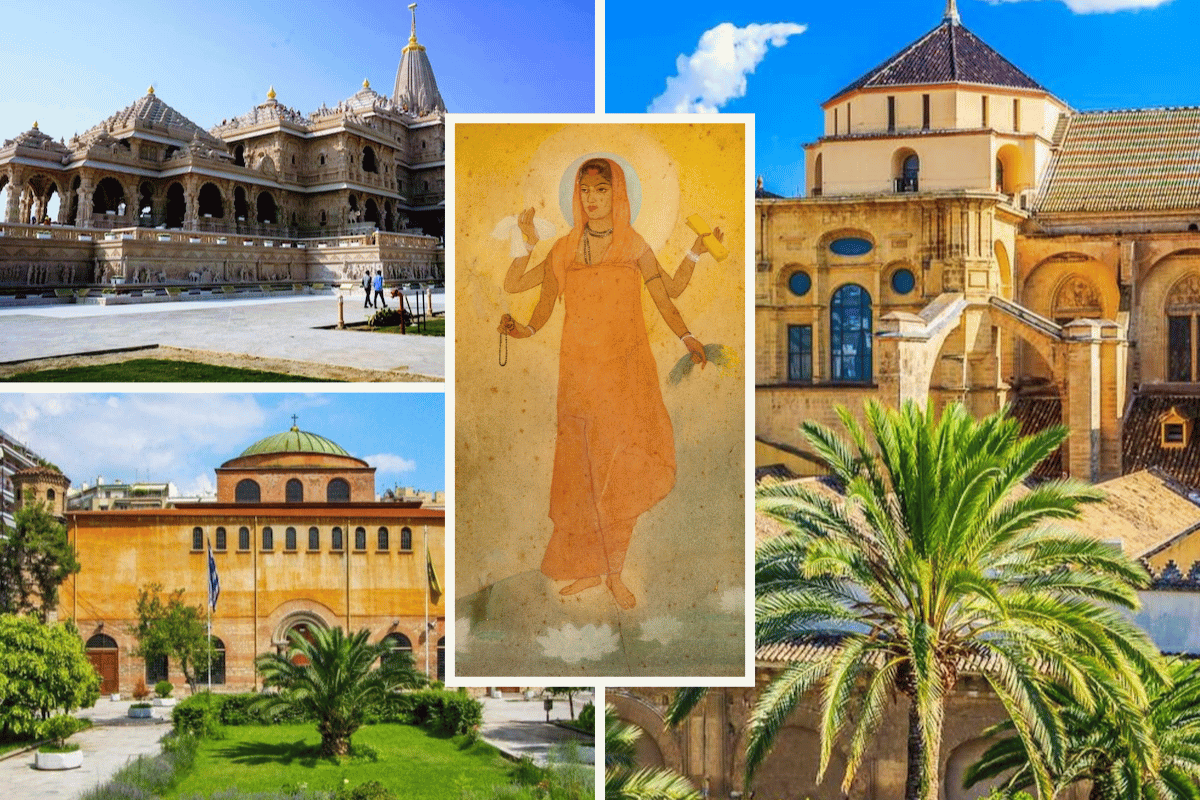
Ponderings on the curious case of the Hinduphobic Hindu, sorry tales of multigenerational subconscious conditioning, civilisational Stockholm Syndrome, the enduring hegemony of words chosen for us and chosen by us, and the deliberate morphing of right-wrong issues into right-left issues, to gaslight Hindus.

At the World Hindu Congress meeting of 2023 in Bangkok, the timely and bold step of confronting some of the deeply entrenched parlance used by, for, and about Hindus – calling for Hindus to use the term Hindutva – the “tva” being a synonymous and more linguistically accurate replacement for “ism” – the essence of being Hindu. This was a direct answer to the Dismantling Global Hindutva conference, supported by the so-called cream of American Indological academia, which skyrocketed the term Hindutva to new heights of both demonisation and deliberate confusion.
To some extent, the Dismantling Global Hindutva conference was successful as it did indeed further consolidate the mis-conflation of Hindu nationalism, with right-wing fascism, with Hindutva, and so on – maliciously encouraging people to use all of these words interchangeably. So much so, that even within Hindu circles, the hunt for the Hindutva fascist bogeyman began – particularly when Hindus appeared organised, united and put forth their ideas, concerns and expectations on an equitable footing with others (including expressing concern that such a bigoted conference was allowed to take place at all) – of course, unlike many others, Hindus usually put for their concerns in a peaceful and law-abiding manner. The Dismantling Global Hindutva conference was enough though, to scare Hindus who didn’t want to associate themselves with “politics” into continuing to put their heads below the parapet (this time with even greater fervour, terrified of chanting Jai Shri Ram during Ram Navami or displaying a Swastika), while other communities started enjoying their newly strengthened stranglehold on Hindu minds. Indeed, Hindus standing up for themselves (always in a peaceful and law-abiding manner, unlike many others) – was equated with being political.
Strangely though, very few have thought to question the definition of the various terms that are used interchangeably to gaslight Hindus, and whether similar terminology is applied to non-Hindu communities, with the same lens. Take Hindu Nationalism, for example. A term loaded with all sorts of negative connotations about fascist or right-wing attitudes towards non-Hindus and often used interchangeably as a synonym for fascism or “right-wing”. But how did this term come to be used in the first place? For this, one must step back in time to India’s independence struggle and tragic partition – so please entertain a slight digression here. During India’s partition, minorities demanded separate pieces of land where they could become the majority. Many Indians – Gandhi included – preferred that the remains of Hindu sacred geography lying within the newly partitioned geopolitical entity of India – should be secular. Anybody who even remotely questioned that view (even if they were secular at heart and also championed minority rights), or who stood up for Hindu rights without taking a clear geopolitical stance, or who did not turn a blind eye to the atrocities against Hindus – was demonised as a Hindu nationalist.
Moreover, anyone who questioned Gandhian methods of obtaining freedom for India (even if they had no specific opinion as to how the final constitution of a new India should look, and even if they were united and worked alongside non-Hindus in their political activism) – was termed a Hindu nationalist if they were Hindu. The same did not, of course, apply to non-Hindus who deviated from Gandhi’s viewpoint. Indeed, most freedom fighters who opposed Gandhi’s strategy to gain independence from colonial powers but were not specifically Hindu advocates – were also mislabelled as Hindu nationalists. All the while, minorities became the majority in their own new geopolitical entities with no censure – any Hindus who wanted constitutional respect for Hindu sacred geography (while also living secularly) were vilified, while non-Hindus who were successful in carving out their own pieces of land to govern as they wished – got off scot-free. It was conveniently forgotten that minorities – be they Parsi, Jewish, Muslim or any other community – have lived in comfort and protection in India for millennia by virtue of the magnanimous Hindu worldview.
Fast forward several decades – the Hindu minorities in India’s neighbouring countries have declined in numbers (often the target of terrible persecution), while non-Hindus in India have increased in numbers and enjoy a number of benefits and constitutional loopholes denied to Hindus. All this while, though, the term “Hindu nationalist” stuck and has become so deeply ingrained in everyone’s psyche that the term is weaponised outside India to silence and gaslight many next-generation, peaceful, law-abiding Hindus who have absolutely no connection with Indian politics – purely for calling out Hinduphobia – or Hindutvaphobia to coin a new term.
So – going back to the origins of the use of the term Hindu Nationalism – taking its original use in the context of the partition of India on a religious line (rather than conflating it with right-wing or fascist worldviews) – one has to ask oneself why religious nationalism for one religion is bad, whereas religious nationalism for another religion is good. By that definition, the Vatican is Christian Nationalist, and there are a number of Islamic Nationalist states that do not appear to get any criticism despite a number of human rights concerns because religious nationalism in their context has not been deliberately misconflated with other nefarious terminologies. However, the discussion about the ins and outs of Hindu nationalism (applying the original context and purpose of the term to India today), is an entirely different subject for another day.
It is, however, within the remit of this article, to question why next-generation Hindus living outside India (some having never set foot in India) and advocating (peacefully and law-abidingly, we must keep emphasising) are still labelled Hindu nationalists? The answer stares us right in the face, similar to the Freudian slip of the Dismantling Global Hindutva flyer betrayed (described later). And that answer is unfinished business – despite the partition, India is perhaps the last bastion of old-world civilisation that has remained unconquered. And the toxic cabal formed by ultra-leftists, wokes, Western academics, and Islamo-Christian supremacists – resents this and it suits them to continue misusing the term Hindu nationalism, even though diasporic Hindus have no intent on turning their respective countries into Hindu nations.
The eternal relationship of Hindus with India is indeed very much played upon even among non-Indian Hindus, to malicious intent. Whereas other communities are allowed to have some positive sentiment with regard to their own sacred geography, diasporic Hindus are made to feel as though they are treading on very thin ice if they hold the same sentiment. Unlike other religions where there may be a deeply ingrained, fundamental concept of exclusive brotherhood or a faith-first doctrine that transcends geopolitical boundaries (effectively, making these communities religious globalists), Hindus are a much more decentralised bunch who don’t seek to dominate, expand and appropriate. And yet, Hindus are still painted as the bad guys – even if it means spreading misinformation and deliberately turning right-wrong issues into right-left issues to do so.
It is interesting and unsurprising that the very same communities that do have globalist or expansionist doctrines are the very ones that mislabel Hindus and have taken the hegemony of terms that only Hindus have the right to own, away from Hindus. So, Hinduphobia, despite its possible origins in 1866, is seen as jumping on the bandwagon of other phobias. The deeply symbolic metaphors that convey Hindu philosophical and metaphysical concepts become mythology, while the term theology is applied to others – a throwback from centuries of colonialism and a now widespread system of academia and career progression that was built on the smouldering embers of old-world civilisational systems.
A genocide is not a genocide when Hindus are the victims (indeed, crimes against humanists are dressed up as separatist movements, riots, and all sorts of other watered-down terminology when Hindus are the victims) – and when Hindus call this out, they are labelled as perpetrator-phobic. Hindus are scared to use the term Jai Shri Ram in case this causes offence to others – it is likely that they won’t need to hold their breath for long until the powers that be (that is, a prevalent over-arching world system that is a relic of Euro-Christian and Islamic expansionism, Western academia together with a good dose of Marxism and funding from various nefarious sources to keep the media narrative complicit) declare Jai Shri Krishna, Jai Bhavani and Jai Mata Di to also be offensive. We also now have Hindu (or dare I say, Hindutva) festivals that have been misappropriated and duly purged of their Hindu-ness and anything that Hindus hold sacred, in the name of inclusivity. Deepavali is now the Festival of Lights, Holi is now the Festival of Colours, and many Hindus are quick to apologetically justify that other festivals showcasing Hindu iconography are more “cultural than religious”. Expansionist and “appropriationist” ideologies do not want to throw the baby (anything useful that has come out of Hindu civilisation) out with the bathwater (Hindu existence).
Yoga is reduced to physical postures, meditation is misappropriated to mindfulness, kriyas to breath control. Hindu contributions to science, maths, astronomy, medicine and many other fields have been conveniently swept under the carpet so that school children the world over have no idea that Newton’s Laws, Pythagoras’ Theorem, Arabic numerals, and even common board games (such as chess and snakes & ladders) have a more ancient history and came to fruition because of Hinduism’s encouragement of both inner and outer exploration – it is certainly high time that due acknowledgement is given in educational rhetoric and this begins with changing the very terminologies that have become so normalised. The list is endless. And a number of Hindus genuinely buy into the above word-power games – indeed, the well-meaning concern for the sentiments of others who themselves unapologetically set these double standards and would not think twice about taking these double standards further if they could get away with it, can be compared to nothing other than civilisational Stockholm Syndrome. If it isn’t enough that the prevalent world order appears to be designed to gaslight Hindus and other old-world civilisations, Hindus do it to themselves and to each other.
Not only is prevalent rhetoric deeply accepted by many Hindus looking to lead a peaceful life, earn money and not bother their minds too much, but we also see the paradox where Hindus reject the prevalent rhetoric when it could be advantageous to use it in certain contexts, in ways that would have onlookers antagonistic to Hindu existence rubbing their hands with glee. Indeed, Hindus often engage in intellectual arguments over definitions of Hinduism – including endless debates about the nomenclature of Sanatana Dharma, over whether a religion such as Hinduism even exists or if it is more appropriate to call it a way of life (forgetting that a way of life is not a protected characteristic, and Hinduism does not specifically prescribe a centralised way of life in the same way as other religions do), or perhaps it is an all-encompassing cultural identity that includes all aspects of life and even incorporates people who don’t have an affinity for “Hindu” religion and spirituality – a point that would have the Joshua Project nodding its head with approval. While there is no uniform code of what to wear, how to worship, and many of the other mundane aspects of life – others view Hinduism (or Hindutva) as an idealistic worldview that seeks to make sense of everyone and everything’s place in the grand scheme of things. While Hindus debate the definition of Hinduism (or Hindutva), antagonistic forces conveniently continue undermining it. Perhaps – as a “starter-for-ten” working definition – it would be useful to consider what antagonistic forces consider to be a Hindu and an object of attack in the first instance. This would help address pressing issues while perhaps a range of working definitions that are fit for different purposes (legal, metaphysical, philosophical etc), are developed.
It is said by some that Hinduphobia was coined by Britishers during the Raj, to describe the fear and suspicion of what appeared to the Euro-Christian eye, to be very different customs and traditions. The definition changed to describe more hostile, actively destructive and derogatory attitudes and behaviours towards Sanatana Dharma tied in with narratives of it being regressive, oppressive, and rigid – usually with an agenda to convert and nowadays with an agenda to cause regime change. Hindumisia and Hindu hate were brought in as alternative and often synonymous terms. But what about Hindutva – the Dismantling Global Hindutva conference failed miserably in coming to a concrete definition even though they tried very hard to separate Hindutva from Hinduism. As a reminder of what was mentioned earlier, Hindutva – going to its linguistic roots – can be considered to mean something along the lines of “Hindu-ness” or even “Hindu-ism”, or the “essence of being Hindu”. This essence can encapsulate a number of different aspects – identity, affinity, culture, and indeed our very existence.
It follows, by the logic of the Dismantling Global Hindutva conference perpetrators (for, the conference was a hate crime in itself) – that the very existence of Hindus is right-wing, fascist, regressive and condemnable. What I do think though, is that the conference perpetrators had a different working definition of Hindutva and that the pictorial emblem of the conference gave their real understanding or intention behind the term away – the second of the Freudian slips mentioned earlier. The pictorial emblem of the conference demonstrated RSS Karyakartas in their khakis being violently prised away with tools. Whether or not individual Hindus support the RSS is a different matter, but for many of the perpetrators of hate against Hindus, the RSS represents a ground-level organisation that seeks to unite Hindus (transcending all the countless traditions and sampradayas that Hindus follow), work for everyone’s social welfare (irrespective of caste and creed), and reform and evolve any outdated thoughts and beliefs.
In essence, the flyer visuals represented Hindu strength, organisation and unity. Any scenario where Hindus are united and view themselves on an equal par, with equal rights, as those from other communities – this equal lens could extend to anything from expressing their identity, calling out a number of the aforementioned double standards, and lobbying in a law-abiding and fair way for change – was encapsulated in that flyer visual. This unsettles people, who want to keep Hindus de-centralised, and who see India and any political system within India that respects the native faith, belief and knowledge systems – as a threat to their agenda for demographic change, conversion, political sovereignty and ultimate hegemony – indeed – unfinished business of several centuries if not millennia of invasion and colonisation (including that of the mind).
Indeed, substitute the word “Hindutva” for “Hindu cohesiveness, organisation and unity”, and one gets a glimmer of what the DGH perpetrators and many others are rattled by. And many Hindus, with their own lack of clarity, start jumping on the bandwagon of turning right-wrong issues into right-left issues, as the prevalent system and media narratives dictate. The inherent hypocrisy lies in the fact that the rights to cohesiveness, organisation, unity and freedom of expression appear to apply to any religious group – as long as it is not Hindu.
So, what next? The first step in finding a roadmap to a complex and troubling problem is crystallising it in words and finding new parlance to describe it where existing language might not be entirely fit for purpose. Hindus are afraid of both their Hindu-ness and have been made to feel afraid of Hindu unity and cohesiveness when it is for the common and constructive good. In essence, the phobia extends to both definitions of Hindutva (1. Hindu-ness/essence of being Hindu and 2. The subconscious DGH definition encompassing Hindu unity and cohesion) – we have now made way for a new kind of dual phobia – Hindutvaphobia and Hindutvamisia. What would happen, though, if Hindus deconditioned themselves to several centuries of mental subjugation? Imagine the positive shift for our own selves, if we changed the words we use. This change begins in our own minds, in our own daily speech and language, in questioning the terms that are used so casually every day, in questioning everything that has been normalised in our rhetoric and that has soaked so deep into the sponges of our inner psyche. Changing the terminology of Hinduism to Hindutva is not only a useful working reminder to question and call out the daily rhetoric, and for Hindus to reclaim the power over their own rhetoric and terminology – but is also the first step in a very important journey towards social, cultural, religious, spiritual and civilisational justice.







